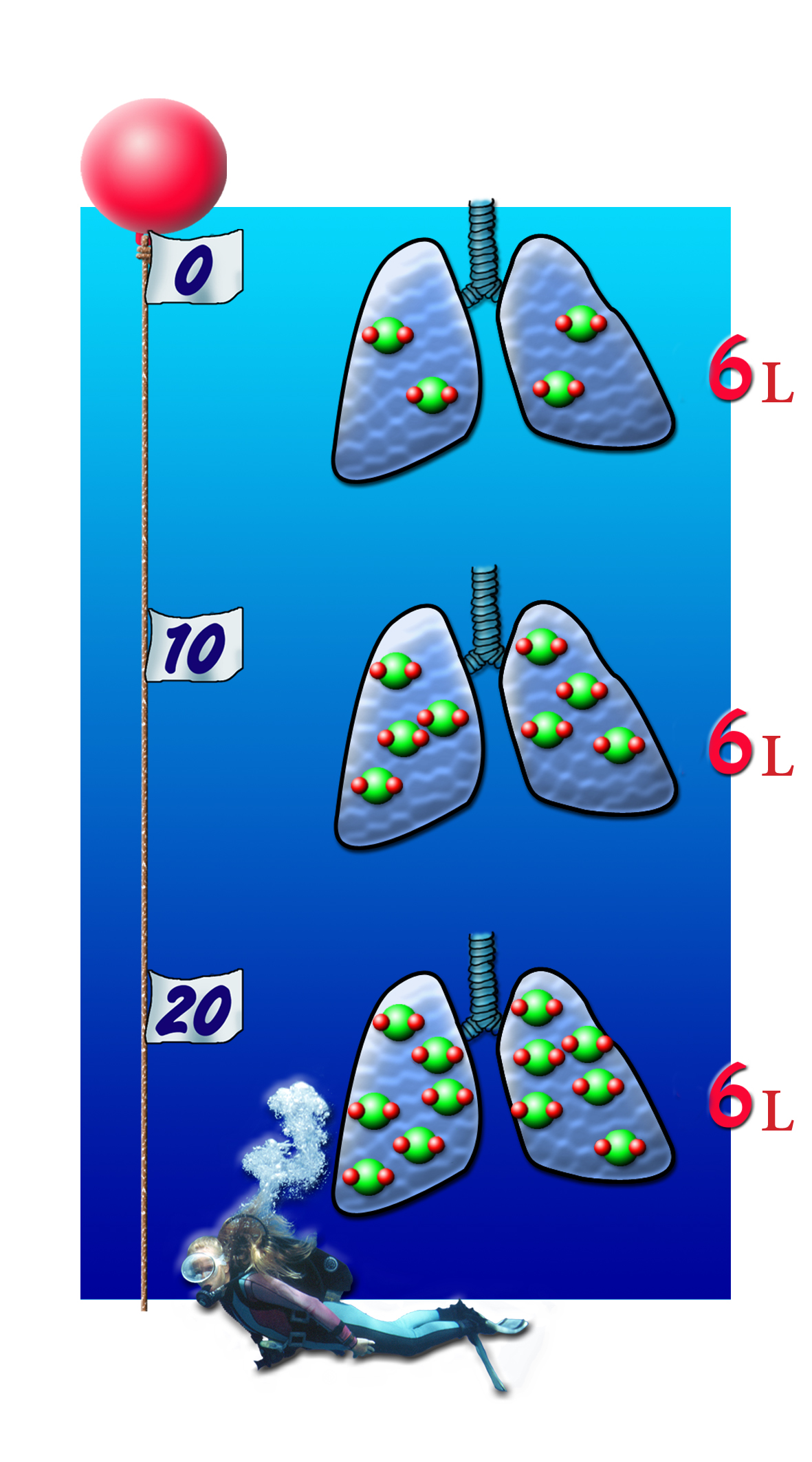When scuba diving, the diver receives a continuous supply of air from the scuba cylinder. The diver breathes regulated air, with a pressure equal to the environmental pressure. In fact, the diver equalizes the pressure in his lungs to the environmental pressure by just breathing regularly. A diver that breathes regularly shouldn't experience nearly any change in lung volume. However, scuba divers must also equalize the pressure in their ears by pumping. The main problem concerning change of the environmental pressure in scuba diving has to do with ascending to the surface when the dive ends. The ascent must be done in a gradual and controlled manner, with the diver breathing regularly, equalizing the air pressure within the lungs with the environmental pressure, thus preventing over-expansion of the lungs. If the diver stops breathing when ascending, he will actually cause a "trapping" of high-pressure air in his lungs, with the environmental pressure gradually going down the more he ascends. The trapped air will aspire to equalize its pressure with the environment, and the lungs will expand. If the lungs expand beyond their capability, tears may occur in the lungs (see more in the Diving Risks chapter: Lung Overexpansion).
When scuba diving – never hold your breath!!!
 The deeper you dive, the air density in your lungs increases
The deeper you dive, the air density in your lungs increases
It is not possible to copy content from this course.
If the course is interesting you can share it with your friends
In order to take the following knowledge exem,
you must review all the topics of this chapter
In order to move on to the next chapter
You must pass the previous chapter exam.
In order to start the final exam
You must complete the entire course
To move on to the next chapter
You are required to pass the exam for this chapter.
This content can be viewed
Only by purchasing the full course
purchase this course